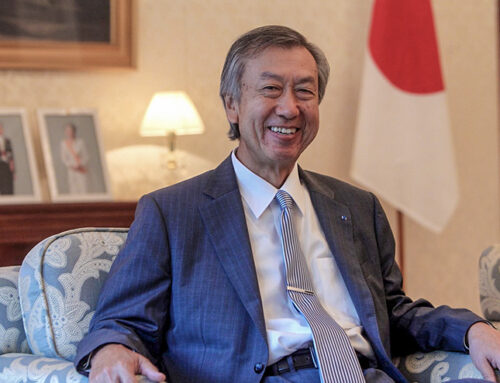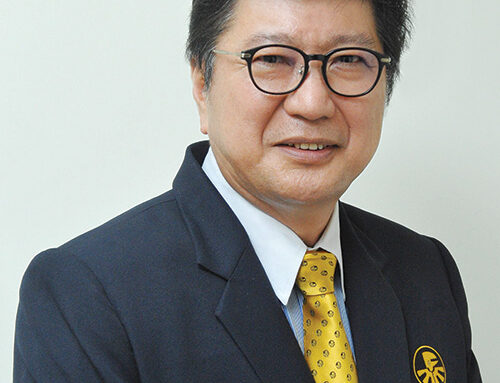Established in 2016, the Malaysian Aerospace Industry Association aims to promote the development of the commercial aerospace industry in the country and to enhance the export of Malaysian aerospace products and services. Additionally, the Association’s goal is to foster, support and represent the interests of its members, creating a platform of expression of the common interests regarding the economic, industrial and commercial aerospace activities.
Naguib Mohd Nor, President of the Malaysia Aerospace Industry Association (MAIA), highlights recent developments in the field and the Association’s important role in the international development of the Malaysian aerospace industry.

European Times: Please elaborate on the establishment of MAIA and your role as President of the Association.
Naguib Mohd Nor: MAIA is an initiative of Malaysia’s Minister of International Trade Mustapa Mohamed, following the establishment of the National Aerospace Industry Coordinating Office (NAICO).
As the owner of Strand Aerospace Malaysia, a renowned aircraft company which works for Airbus and Boeing, thus combining the engineering and high-end design capacity in the industry, I am constantly provided with a bird’s eye view of the ongoing conditions in the sector. 30% of its shares are owned by the Government through the largest human capital agency in the country – MARA, which manages 230 skill colleges, 55 A-level colleges, 22 vocation colleges and the University of Kuala Lumpur. Additionally, I was involved in some of the key governmental projects in the industry, such as the Economic Transformation Program (ETP), the Malaysian Aerospace Council, and sub-projects on aerospace and high-tech education. The combination of experience in the aircraft technology, governmental capital and human capital, are three most important milestones of my role as the President of MAIA.
Today, the Association counts 65 members, including major aerospace players of the country, such as SAFRAN, RUAG and Asia AeroTechnic.
European Times: What is the main role of the Association in the country’s aircraft sector?
Naguib Mohd Nor: MAIA is the voice of the Malaysia’s aerospace industry and works to promote and develop Malaysia as an aerospace hub for Asia. The Association focuses on six basic pillars of the industry, which include: maintenance, repair and overhaul, manufacturing, engineering services, human capital, research and technology, and systems integration.
In this context, our goal is to ensure formation of a strong network between the members, creating an ecosystem for the aerospace industry in Malaysia which will voice the challenges and issues in the sector to the governmental institutions. The Association also presents its members to the international community, marketing them as an ecosystem for aerospace work with defined joint competitive advantages.
European Times: Who are the most successful investors in the sector?
Naguib Mohd Nor: The aerospace industry has recorded an impressive growth in recent years, especially in the field of commercial aircrafts. For example, Spirit Aerosystems, an American investment in Subang and a tier one to Boeing and Airbus, is expected to grow extensively in the following period. The company is supported by the supply chain of Composite Technology Research Malaysia, one of the first few aerospace manufacturing companies founded in the country, now owned by the DRB Group. One of the large pilot projects of Strand and MARA was in supporting UMW, a manufacturer for Toyota cars, that has successfully entered into the aerospace manufacturing market.
Airbus plays an important role in the Malaysian aircraft industry, through its established companies, including Airbus helicopters, Airbus customer services, Sepang aircraft engineering, which is owned by Airbus (Airbus MRO) and Airbus Corporate. Malaysia is also one of the first operators of Airbus’ A400M military transporters. Boeing marks its existence on the market through the production of composite parts for the 737 and some of the other Boeing aircrafts.
European Times: What are MAIA’s future priorities and goals?
Naguib Mohd Nor: The movements in Malaysia’s industry shows signs of transition from electronics, automotive and oil and gas manufacturing, to aerospace and avionics. This movement is a reflection of the evolution of the Southeast Asian countries, from cost-based/wage-based to technology and knowledge-based business model, developed in Western countries. On the other side, the aerospace industry is facing deficiency in production considering the market demand.
This is why we are focused on fostering synergy and the creation of a strong supply chain which will ensure competitive advantage in the international aircraft industry. Our main strategic priority is to work as the collective mind of the industry, to unite the specific goals and objectives of the companies and encourage co-investments. This will solve the challenges of the larger members, which are in need of a better supply chain, as well as the needs of the smaller members, which require governmental support for innovation or investments.
European Times: Why should foreign investors target Malaysia’s aircraft sector?
Naguib Mohd Nor: Malaysia still has a strong competitive advantage due to competitive labour costs for high skilled resource. Nevertheless, considering the fact that the recent developments in the sector will provide rapid changes in terms of creating a qualified and skilled workforce, current investments in Malaysia provide a strong basis for the establishment of successful production facilities, with a possibility to outsource the production of cost-sensitive components to select neighbouring countries where labour cost may be cheaper. Being at the heart of the currently largest aviation market, Malaysia is the right place for establishing manufacturing capacities with strong supply chain and cost advantage.




